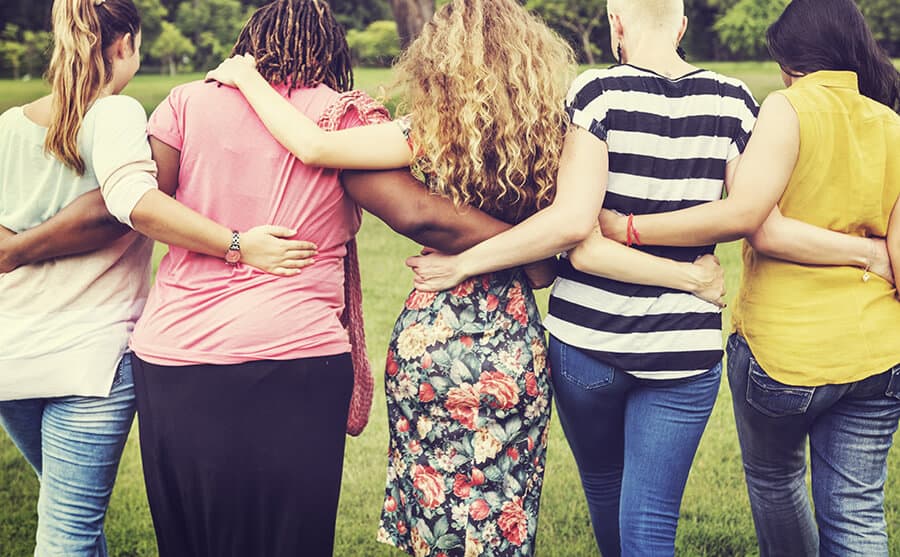What we mostly hear about and talk about nowadays is based on the information we receive from our digital devices. Whether that be through our lap-tops, phones, tablets, or work computers, we keep ourselves attached to screens, waiting for the newest events to come up. This “screen attachment” of ours has changed the way we live, and the way we communicate with one another, in ways that we can hardly begin to imagine.
It must not be so hard to understand why people back in the day had more fulfilling careers and why they more easily felt happy. They shared things with one another, physically, whenever physical distance did not appear to be a problem.
And I’m not just saying they were happier because that is what I think. Similar findings have actually been concluded in multiple studies across the globe. It seems that expectations rise with rising innovation and expanding possibilities – with increased disappointment in life as a consequence. According to the most recent 2019 World Happiness Report, negative feelings are rising around the world—and the United States has been particularly hard-hit, with an “epidemic of addiction.”
So why is this overwhelming wave of insecurity capturing a generation? It’s certainly because of the way we now communicate with one another. It is a sad irony that, although we have so many ways of communicating with each other, we don’t seem to be connecting enough with people.
There are differences between communicating and connecting.
It has become more difficult to understand the feelings of other people, because we rely so much on screen text messages rather than just meeting up and talking. We tend to forget that beyond the comfort of written words, there is nothing more necessary to people than socializing and inter-acting face-to-face. It is a whole different kind of communication, when you are able to perceive the emotions and feedback coming from the facial expressions of the person who is listening to you, or talking to you.
A Retrospective on the Past of Communication
We can pretty much start by comparing the levels of communication from our remotest ancestors. They led tribal lives, which provided them with a sense of assurance that, in the event of trouble or despair, it would always be possible to turn to someone for help. Although conditions were primitive, there was a solid understanding between members of the tribe. When you look at it from a psychological perspective, belonging to a tribe must have provided people with a basic, much-needed feeling: the feeling of belonging.

When you share things with people, eating together, working together, planning and speaking about the diverse way our world makes us feel, there is a sense of relief. That is why having a job and sharing an office with a few people makes us feel useful. You go through the day sharing your responsibilities with a group of people who sooner or later become your circle. Except for the purpose of profiting and surviving from that job, the social aspect is not to be underrated. People used to be fully present, without virtual disturbances. And hence, their level of happiness had a different intensity. We keep relating communication and happiness because you just cannot separate these two, when referring to mental health.
Yet another research project by the Social Market Foundation and the Centre for Competitive Advantage in the Global Economy (CAGE) found that although in 1957, in the U.K., life expectancies were lower, and Gross Domestic Product (GDP) was lower, and more hours were worked in a typical week, and few households had central heating, and fewer than half owned a television, levels of public happiness were at a height never reached again in the British post-War period.
And you don’t even have to read it in studies to understand that’s the truth. Although there was room for improvement in many aspects of social and economic rights, and people obviously raised their voices to achieve better fulfilment of these rights, they also had another concept of what made them happy. They did not have the urge to remain constantly informed about what happened around the world, as long as they knew what was happening with the most loved ones who surrounded them.
Even our parents from the ‘80s and ‘90s constantly let us know that the world they grew up in was a whole lot easier. Society back in the day shared a collective will to fight for what was not right, and to do it in the streets, rather than organising virtual gather ups and online discussions.
Even the music of those days, the lyrics, the parties held at the time and all these elements let us know that communicating and sharing experiences with people was essential to people’s wellbeing. And they happened despite political and economic downfalls, because people had hope that things would get better if they stuck together.
Looking Through Communication Nowadays
Many readers may identify all the above as indicating a pessimistic perspective; however, there are so many tools we could use for the goal of healthy communication nowadays.

When it comes to checking up on people, we are a call away. And when distance interferes in our relationships, we can take advantage of technology to try and remain closer to the people we love. But there is one thing we must understand when it comes to using technology and its means of communication: Limits.
It does not matter how introverted we are, or how long our day at work may be. The option of calling up a friend, relative, sibling or an acquaintance to discuss and update one another on life should never be something we frown upon. The reward will be that we make both ourselves and the other person feel much appreciated, valued, and understood.
If we could only put limits on just how much we use social media, how much we remain anxious as we wait to hear what’s next from the online medium, and if we could have the strength to put down our smartphones more often, in exchange for longer talks alongside a river or under the shade of a tree, the world would definitely start becoming a more empathic, better place to live in!
Photos: Shutterstock
Read more articles from Youth Time Magazine:
Support us!
All your donations will be used to pay the magazine’s journalists and to support the ongoing costs of maintaining the site.
Share this post
Interested in co-operating with us?
We are open to co-operation from writers and businesses alike. You can reach us on our email at [email protected]/[email protected] and we will get back to you as quick as we can.









